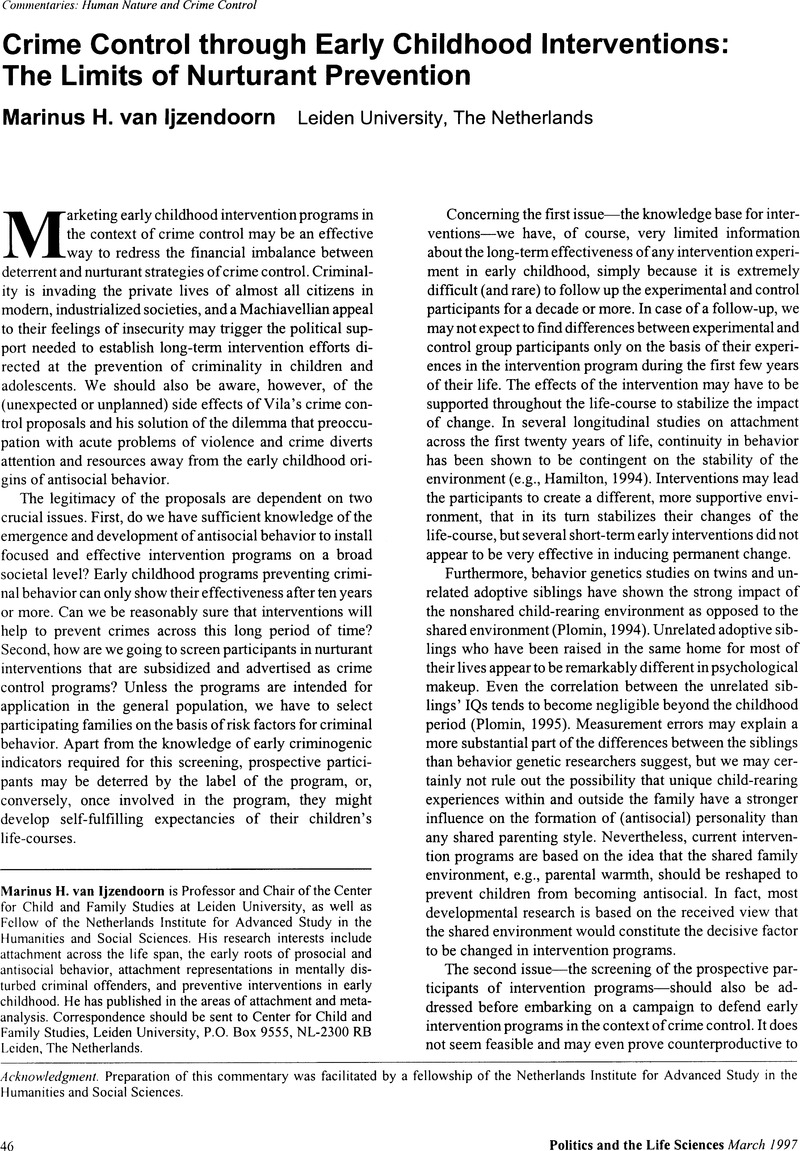No CrossRef data available.
Article contents
Crime Control through Early Childhood Interventions: The Limits of Nurturant Prevention
Published online by Cambridge University Press: 17 May 2016
Abstract
An abstract is not available for this content so a preview has been provided. Please use the Get access link above for information on how to access this content.

- Type
- Roundtable Commentaries
- Information
- Copyright
- Copyright © Association for Politics and the Life Sciences
References
Hamilton, C.E. (1994). “Continuity and Discontinuity of Attachment from Infancy through Adolescence.” Doctoral dissertation, University of California at Los Angeles.Google Scholar
Lyons-Ruth, K. (1996). “Attachment Relationships among Children with Aggressive Behavior Problems: The Role of Disorganized Early Attachment Patterns.” Journal of Consulting and Clinical Psychology 64:64–73.CrossRefGoogle Scholar
Moffitt, T.E. (1993). “Adolescence-Limited and Life-Course-Persistent Antisocial Behavior: A Developmental Taxonomy.” Psychological Review 100:674–701.Google Scholar
Plomin, R. (1994). “The Emanuel Miller Memorial Lecture 1993: Genetic Research and Identification of Environmental Influences.” Journal of Child Psychology and Psychiatry and Allied Disciplines 35:817–34.Google Scholar
van Ijzendoorn, M.H., Feldbrugge, J.T.T.M., Derks, F.C.H., De Ruiter, C., Verhagen, M.F.M., Philipse, M.W.G., Van der Staak, C.F.M., and Riksen-Walraven, J.M.A.(in press). “Attachment Representations of Personality Disordered Criminal Offenders.” American Journal of Orthopsychiatry.Google Scholar




